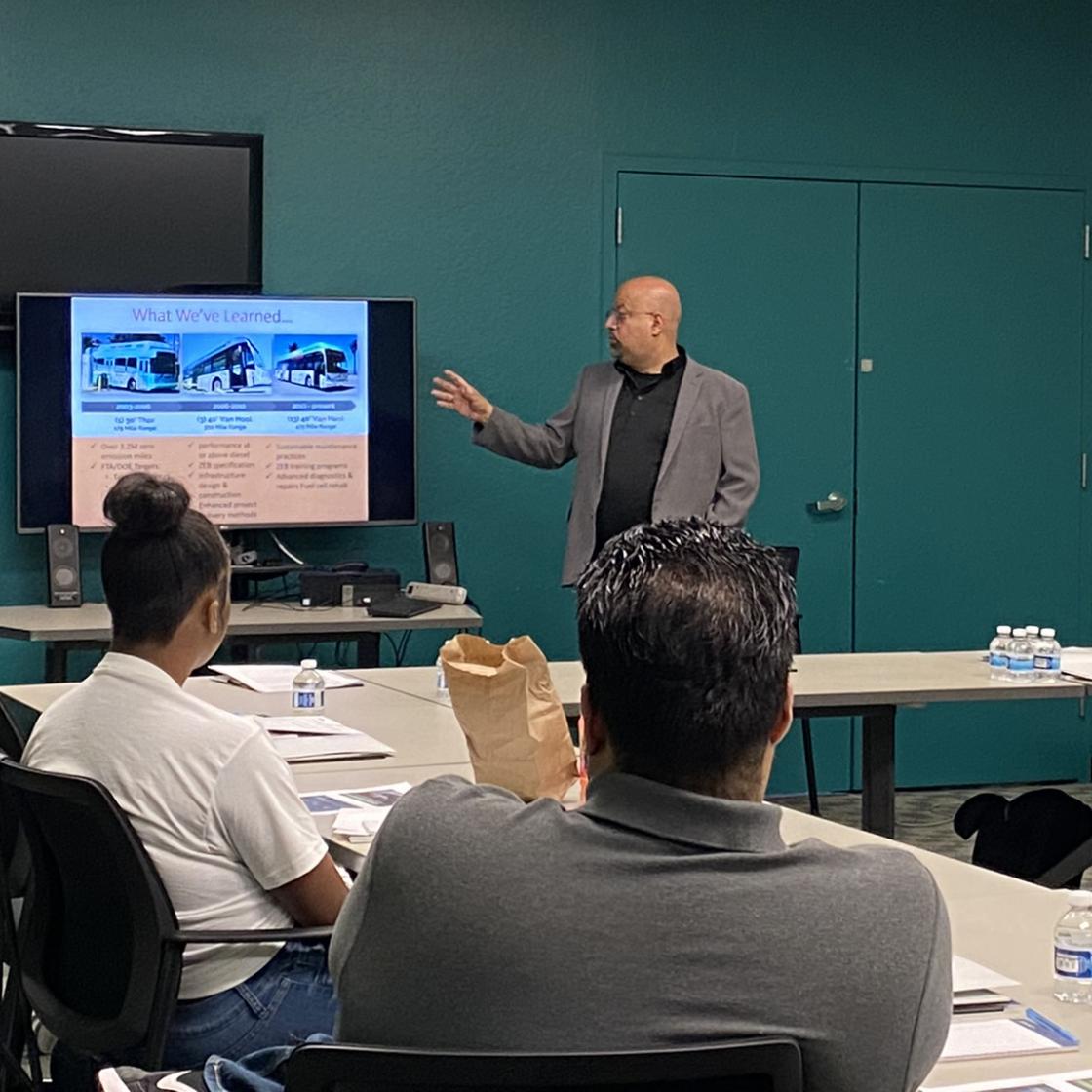Youth Innovation Challenge
AC Transit is proud to be a local sponsor of the 2024 Youth Innovation Challenge "Sustainable Mobility Career Awareness & Innovation Challenge" In conjunction with Introducing Youth to American Infrastructure (IYAI+). This year's participants focused on expanding on ZEB technology; this year's Innovation Challenge aims to increase awareness of 21st-century transportation careers amongst young people, focusing on the workforce, sustainability, and environmental effects.
Program highlights include:
- Behind-the scenes study of how AC Transit’s cutting-edge hydrogen fuel cell and battery electric bus fleet work.
- Conducted in-house and external interviews with subject matter experts on accelerating zero emission transition.
- Behind-the-scenes in depth conversation on AC Transit sustainability initiatives.
1. By what year is AC Transit set to be 100% zero emission?
A. 2050
B. 2045
C. 2043
D. 2040
2. What color top does most of our ZEBs have?
A. Blue
B. Green
C. White
D. Yellow
3. What percentage of emissions does our zero emission fleet produce?
A. 10%
B. 8%
C. 5%
D. 0%
4. What energy producing system is implemented on all our ZEBs?
A. Regenerative Braking
B. Solar Panels
C. Nuclear Charging
D. Arc Reactors
5. What can you "see" come out of the zero emission fuel cell bus tailpipes?
A. Oil
B. Battery Fluid
C. Water Vapor
D. Hydrogen
6. What is the byproduct when hydrogen (H2) reacts with oxygen (O2) in a fuel cell?
A. Water
B. Electricity
C. Both Water & Electricity
D. Nothing
Trivia Answers
1. D
The 2019 California Innovation Clean Transition Regulation requires all public transit agencies to transition to zero emission technologies by 2040.
2. B
Majority of AC Transit’s zero emission Bus tops (roofs) are green to help them distinguish from the rest of its current bus fleet.
3. D
AC Transit’s zero emission buses produce zero percent pollution, meaning there is nothing harmful coming out of all the zero emission buses. There are no tailpipe emissions – goodbye to diesel exhaust gases!
4. A
The conversion of a bus’s kinetic energy (or energy in motion) into chemical energy (or stored energy) is stored in the battery-powered electric vehicle battery and can be used as electricity to power the electric motor.
5. C
Yup, only water comes out of all the zero emission fuel cell buses.
6. C
Both water and electricity are produced when combining hydrogen and oxygen.





